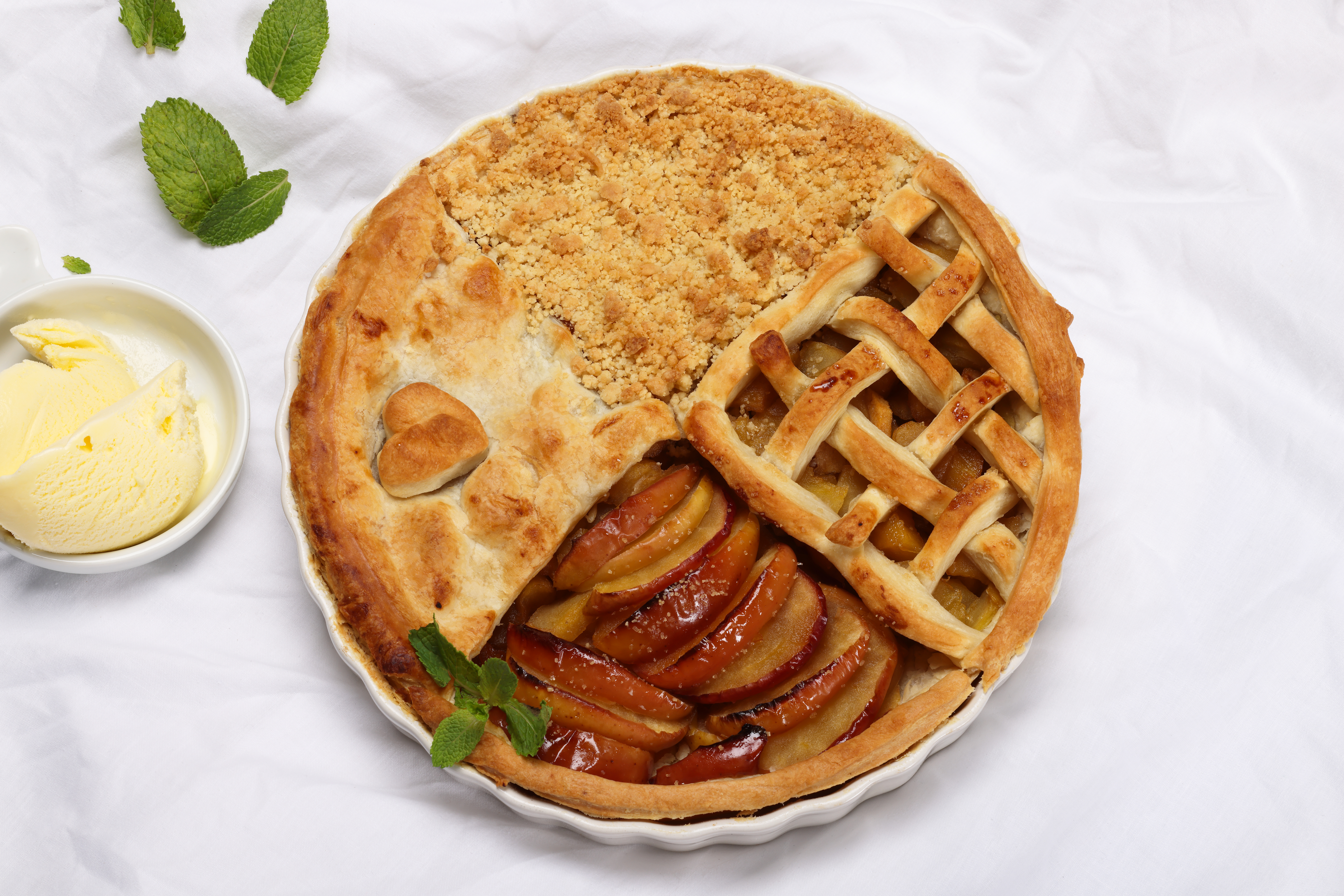Life can be an emotional roller coaster. There are significant moments, like the joy of watching your (grand)child graduate or the sorrow of losing a loved one. And there are insignificant ones, like misplacing your car keys (again!) to belly-laughing with a friend.
Sometimes you might like to pack away your pesky emotions, while other times, you’d love to shout them from the rooftops. Emotions make us human—they allow us to feel sympathy, empathy, and other scientific things. (We’re financial gurus, not experts on the limbic system or the prefrontal cortex, but you get what we’re saying!)
But when it comes to your money—your investments in particular—emotions are…well…not so good! In fact, we believe they could be harmful.
Instead of making emotional decisions, we think you should be as even-keeled, steady-handed as possible. Because when people invest emotionally, they often make mistakes.
Some fear they’re missing out, so they invest too heavily or at inopportune times. Others have a loss aversion, so they invest too little, not at all, or sell when the market takes a dip. Still, a few suffer from overconfidence, so they make poor decisions along the way.
Which of these sentiments do you tend to lean toward? If you're unsure, think about how you felt last year when the market fell nearly 20%. Did you panic watching your portfolio dwindle and sell your investments? Or did you remain steadfast with your wealth plan, even though you were worried?
Knowing what drives your behavior is the first step to helping you avoid emotional investing mistakes. But even if you feel overly sensitive, we think these strategies can help you avoid making mistakes with your investments.
But how do you practice retirement? We have some tips.
3 strategies for level-headed investing
 HAVE ENOUGH CASH ON HAND
HAVE ENOUGH CASH ON HAND
One of the most comforting ways to ease fears during a market meltdown is to have enough liquid cash. Whether you call this a rainy-day fund or an emergency stash, knowing that you’ll be able to pay your bills and have adequate money to sustain your lifestyle during a prolonged market decline is one of the essential strategies for investing emotionlessly. It also can alleviate the need to sell your investments in a down market to pay for daily expenses.
How do you know how much you may need? That depends on your current stage of life. If you are still working, 6-12 months of living expenses should be ample to sustain you. Once you’ve hit retirement, we suggest you carve out enough cash for three to five years of expenses not covered by your current income streams.
Start by considering your income streams. Determine what guaranteed or reliable incoming cash flows you have, like from a pension or Social Security. Then, follow the steps below to determine how much cash you could need above this reliable, stable income stream.
.jpg?width=650&height=366&name=Umbrella%20(2).jpg)
Let’s walk through an example:
DJ, 63, receives $60K in annual pension income. He has other retirement and investment accounts, which he draws upon until he applies for Social Security benefits in seven years. Right now, he spends $100K per year. His monthly car payment of $600 ($7,200 annually) will end in two months. But then he plans to buy a fishing boat, which will cost $750 per month ($9,000 annually).
DJ’s annual expenses over the next three to five years are:
$100K -$7.2K + $9K = $101.8K
And his expenses not covered by his annual pension are:
$101.8K - $60K = $41.8K
So to keep five years’ worth of coverage in a rainy-day fund, he needs the following:
$41.8K x 5 years = $209K
 UNDERSTAND YOUR TIMELINE AND GOALS
UNDERSTAND YOUR TIMELINE AND GOALS
You know the saying, "A watched pot never boils?” Well, a watched portfolio can drive you mad too! This can be true when the market is moving up, but definitely when it is falling.
We believe investing is for the long term. We define long term as no less than three years but more like five, 10, or even beyond a decade. Some other investors define long term as a year or just six months. But a key distinguishing factor is that investing is not day trading. Because if you're watching your portfolio move every second of every day, you may need to redefine or rediscover your timeline and goals.
For example, if you're investing for a specific goal – whether it’s to retire in 10 years, buy a second home five years from now, or leave money to heirs in 20 years—then the daily market fluctuations should be less influential on your portfolio strategy than if you were saving money for next week. And as we mentioned above, if you need money next week, it should be held in liquid cash, not in the market.
 DESIGN A RISK-APPROPRIATE ALLOCATION
DESIGN A RISK-APPROPRIATE ALLOCATION
We've talked about having adequate cash to pay years’ worth of bills and examining your time frame. The last piece is to ensure your asset allocation is appropriate for your risk tolerance and capacity. For instance, if you panic easily, you may need to lower your portfolio's risk. But if you can remain steadfast in the face of adversity, then your portfolio may be structured just right for your tolerance.
It’s easy to understand your capacity to lose money—that’s strictly mathematical. But internalizing your risk tolerance is more complicated. What do we mean? When the daily market is increasing, most people think their risk tolerance is high. That’s because they assume the market will continue to climb. But when the market falls—especially when it declines significantly or for a prolonged period—suddenly, high-risk tolerances may falter.
Although the market appears to be on an upward trend, it's a good idea to examine last year's decline and genuinely reflect on your risk appetite. If you found it relatively easy to ignore the market's downward trajectory, your risk tolerance may be as high as you thought. But if you manically refreshed your screen to see your latest portfolio value, your risk tolerance may need to be lower.
Risk tolerances often impact your portfolio’s expected return. For example, lower-risk portfolios tend to have lower returns. But they also have a reduced likelihood of a significant loss.
Take the historical return of a 100% bond portfolio vs. a 100% stock portfolio from 1926 – 2021.1 The bond portfolio's average annual return was 6.3%, while the stock portfolio was roughly double that—12.3%. The bond portfolio’s chance of a down year was 21%, just slightly less than the 26% for the stock portfolio. But in its worst year, the bond portfolio only lost 8.1%. In contrast, the stock portfolio fell a whopping 43.1% in its worst year.
So setting a risk-appropriate allocation matters—for both your peace of mind and your expected return.
Investing without emotion is hard
We understand that investors often get worried about near-term market conditions. It’s hard not to be concerned when you're losing money…or irrationally exuberant when it seems you can't lose.
That’s why we think you should take feelings out of the equation. Because while things might seem erratic at a particular point, market blips often smooth out when you zoom out. Stock market history shows us that the market may move higher or lower on any given day—and it may trend up or down for weeks or months at a time—but when you look at a longer time frame, it tends to move higher.
No one knows when a decline may occur, and there's no guarantee that this historical upward trend will persist. So that's why it's critical to have enough cash to sustain your lifestyle through the rough patches and a risk-appropriate allocation to maintain your peace of mind.

Like what you're reading?
Join the thousands of readers getting stories like this delivered straight to their inbox every Thursday — for free. Give it a spin, enter your email to sign up.
Footnotes
1Source: Vanguard. Data for the U.S. stock market returns come from the Standard & Poor's 90 Index from 1926 to March 3, 1957, and the Standard & Poor's 500 Index thereafter. Data for the U.S. bond market originates from the Standard & Poor's High Grade Corporate Index from 1926 to 1968, the Salomon High Grade Index from 1969 to 1972, and the Barclays U.S. Long Credit Aa Index thereafter. Data for U.S. short-term reserves are from the Ibbotson U.S. 30-Day Treasury Bill Index from 1926 to 1977 and the FTSE 3-Month U.S. Treasury Bill Index thereafter. Past performance is no guarantee of future returns. The performance of an index is not an exact representation of any particular investment, as you cannot invest directly in an index.
Related Articles

Should You Have Bonds in Your Investment Portfolio?
88%. That’s the percentage of return that comes from asset allocation for most investors.1 So it’s...

Reevaluate? Reallocate? Or Hold Fast? How to Approach Investing in a Recession
Recessions are an economic—not a stock market—phenomenon. Yet, since the economy and the market,...

What Does Inflation Mean for Your Wealth?
Rising prices are scary for many people, especially for those on fixed budgets. But while the...
